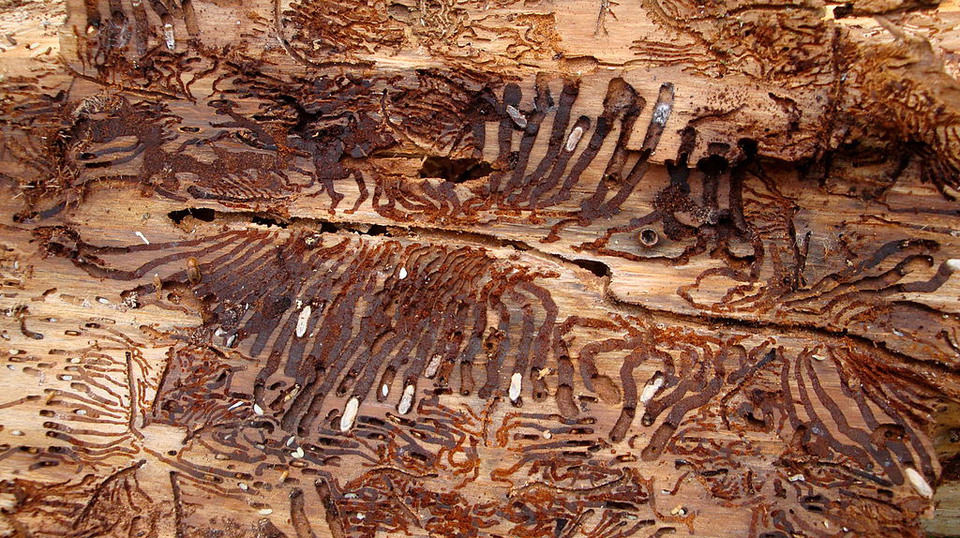
Wood damaged by spruce bark beetle. Photo: Harald Kloth, Wikimedia
Damaged wood can become raw material for clothing
Wood damaged by the spruce bark beetle could be new raw material for clothes. This is the aim for a project within the research program Mistra SafeChem.
The vision of Mistra SafeChem is to enable and promote the expansion of a safe, sustainable and green chemical industry. The programme, which is coordinated by IVL, is developed with the twelve principles of green chemistry as a fundament.
– The program provides a unique opportunity to collaborate between different research disciplines and combine the development of new manufacturing processes with the development of tools for assessing chemical risks and environmental aspects in a life cycle perspective, says IVL's research manager John Munthe.
– Cooperation with the business community from different parts of the value chain also creates conditions for the results to be useful and applied, and thus contribute to change.
Examines residues from forestry
Joseph Samec, professor in organic chemistry at Stockholm University, is leading the project that investigates whether residues from the forest industry can become textile fibers. The work is done in collaboration with Professor Aji Mathew at the same university, who has managed to spin fibers from wood.
– We are looking into how to use bio-based residual streams, such as tops and branches from forestry, and wood damaged by the spruce bark beetle. Later we will also study bark. In collaboration with Skogforsk and Mellanskog, we seek how to get representative residual streams. We develop methods to fractionate the raw material lignocellulose and refine it. The next step is to verify that we have got a good dissolving pulp for textile fibre, here we work with RISE and other partners. Professor Aji Mathew has succeeded in spinning fibres from wood, and we are now scaling this up, says Joseph Samec.
What do you hope to achieve?
– The ultimate goal is to evaluate the new value chains, see that they are sustainable, and identify any obvious risks. We want to lay the fundaments to be able to produce valorized products from forestry residues on a large scale in a not too distant future. But we are not in the application stage, we work with basic research. My goal is that this should lead to something more than an academic study.
What is the most difficult challenge to overcome?
– A challenge in assessing fundamental research methodologies concerning LCA, life cycle assessment, is that the developed methods are often not optimized in terms of solvent, heating, evaporation, purification etc. Thus, an important interface between fundamental research and an industrially relevant process is lacking. This makes it very challenging to perform LCA studies on early-stage research. The work on forestry residues will need much more development before it is ready to be evaluated with respect to LCA. Hopefully, we will gain important input data during the Mistra SafeChem programme to be able to progress to a relevant LCA.
Have you got any results so far?
We have succeeded to make dissolving pulp for fibre from bark beetle infected spruce that has the quality for regeneration. Now we will scale up and make fibre from it, which later may be used to make clothes. We are very happy with it!
For more information, please contact:
John Munthe, IVL, john.munthe@ivl.se, +46 (0)10-788 68 06
Joseph Samec, Stockholm University, joseph.samec@su.se, +46 (0)70-559 25 11
Find out more about Mistra SafeChem at: www.mistrasafechem.se External link, opens in new window.
External link, opens in new window.
